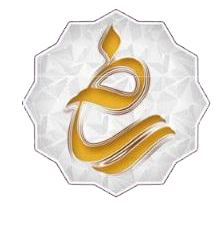بلیط چارتر
تهران به
کیش
2,913
مشهد
2,721
دبی
4,639
نجف
7,258
استانبول
8,196
اهواز
4,076
شیراز
3,647
بندرعباس
4,290
قشم
3,558
بغداد
8,590
ایروان
11,598
تبریز
3,280
مسقط
7,601
استانبول(سبیها)
9,971
کرمان
3,348
بوشهر
3,777
ارومیه
3,047
عسلویه
5,436
شارجه
3,093
زاهدان
4,573
چابهار
3,711
اصفهان
3,398
یزد
3,280
کرمانشاه
3,099
آبادان
3,872
باکو
7,500
اردبیل
2,775
تفلیس
14,316
رشت
2,381
کابل
12,835
بیرجند
3,836
آلانیا
7,799
کویت
10,861
ازمیر
8,294
گرگان
3,564
ایلام
4,314
شانگهای
39,380
دوشنبه
19,490
آنکارا
8,886
ساری
1,606
دزفول
3,948
گوانجو
38,313
تاشکند
19,860
مسکو(شرمتیوو)
19,319
سیرجان
4,896
اربیل(عراق)
22,836
مزارشریف
18,759
سليمانيه
20,526
خرم آباد
3,733
لار
2,515
گناباد
3,025
سنندج
3,948
پکن
33,319
دهلی
28,391
باتومی
11,848
بانکوک
43,631
امیدیه
4,028
شنژن
36,421
یاسوج
4,504
پوکت
46,821
لاهور
17,941
بم
4,927
ماکو
4,168
اسلام آباد
12,000
بندرلنگه
2,577
لامرد
5,999
شهرکرد
3,739
آنتالیا
17,762
جیروفت
5,421
بجنورد
4,504
زابل
5,466
ایرانشهر
5,752
سراوان
5,369
طبس
3,577
بمبئی
17,476
سبزوار
4,300
مراغه
5,119
پارس آباد مغان
5,501
39,752
جاسک
5,752
گچساران
4,504
ماهشهر
5,670
آلماتی
35,990
کوالالامپور
55,000
مشهد به
تهران
3,212
نجف
10,062
کیش
2,964
اصفهان
4,000
بغداد
8,985
شیراز
4,567
اهواز
4,263
آبادان
5,281
ساری
4,010
یزد
4,248
تبریز
5,481
استانبول(سبیها)
9,273
رشت
3,976
قشم
3,479
دبی
9,700
کویت
11,916
کرمانشاه
4,690
بوشهر
4,770
کرمان
1,640
زاهدان
3,622
بندرعباس
5,469
دوشنبه
8,017
نوشهر
4,766
کابل
13,386
ارومیه
4,550
استانبول
9,900
چابهار
3,976
شارجه
14,217
کراچی
16,002
همدان
5,387
مسقط
14,700
ایلام
4,100
لاهور
14,000
عسلویه
6,009
امیدیه
5,546
کویته
11,753
زنجان
5,421
زابل
3,715
اردبیل
5,466
اراک
6,951
سراوان
4,221
گرگان
4,046
بیرجند
1,611
قندهار
7,899
کیش به
اهواز به
اصفهان به
شیراز به
تهران
3,900
کیش
2,361
مسقط
5,480
مشهد
3,453
دبی
6,220
شارجه
6,121
کویت
10,071
رشت
4,727
نجف
11,973
تبریز
6,090
ساری
4,820
عسلویه
3,833
بندرعباس
4,046
استانبول
11,900
قشم
4,046
استانبول(سبیها)
10,968
دوحه
12,215
اهواز
4,920
کرمانشاه
6,184
آبادان
4,920
چابهار
7,115
بندرلنگه
1,858
امیدیه
3,139
زاهدان
4,863
استانبول به
دبی به





